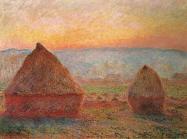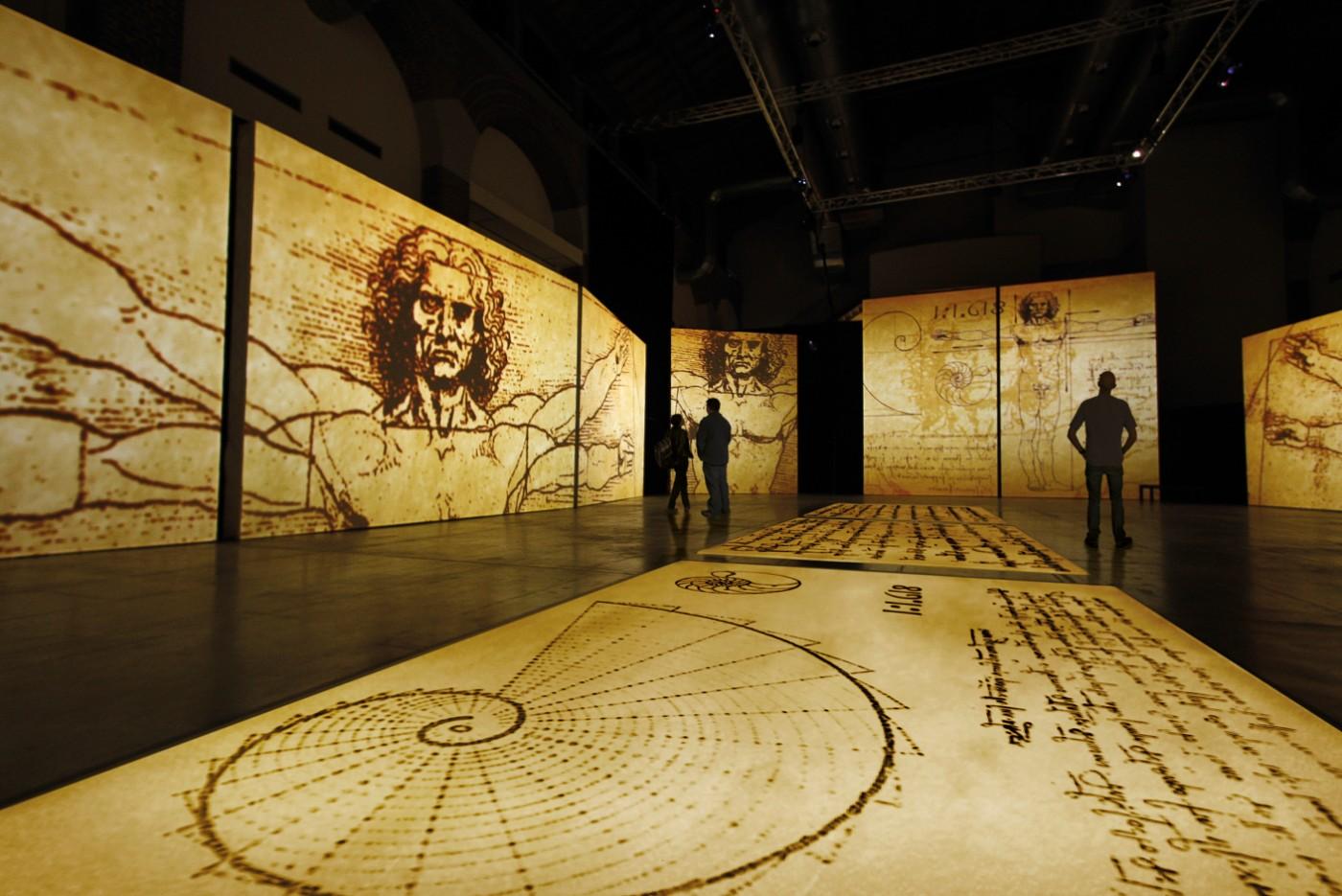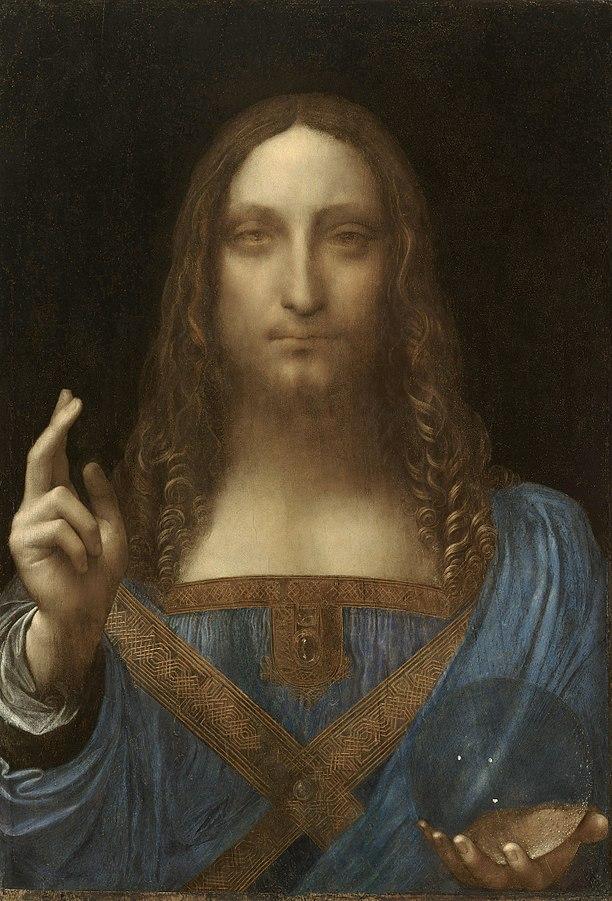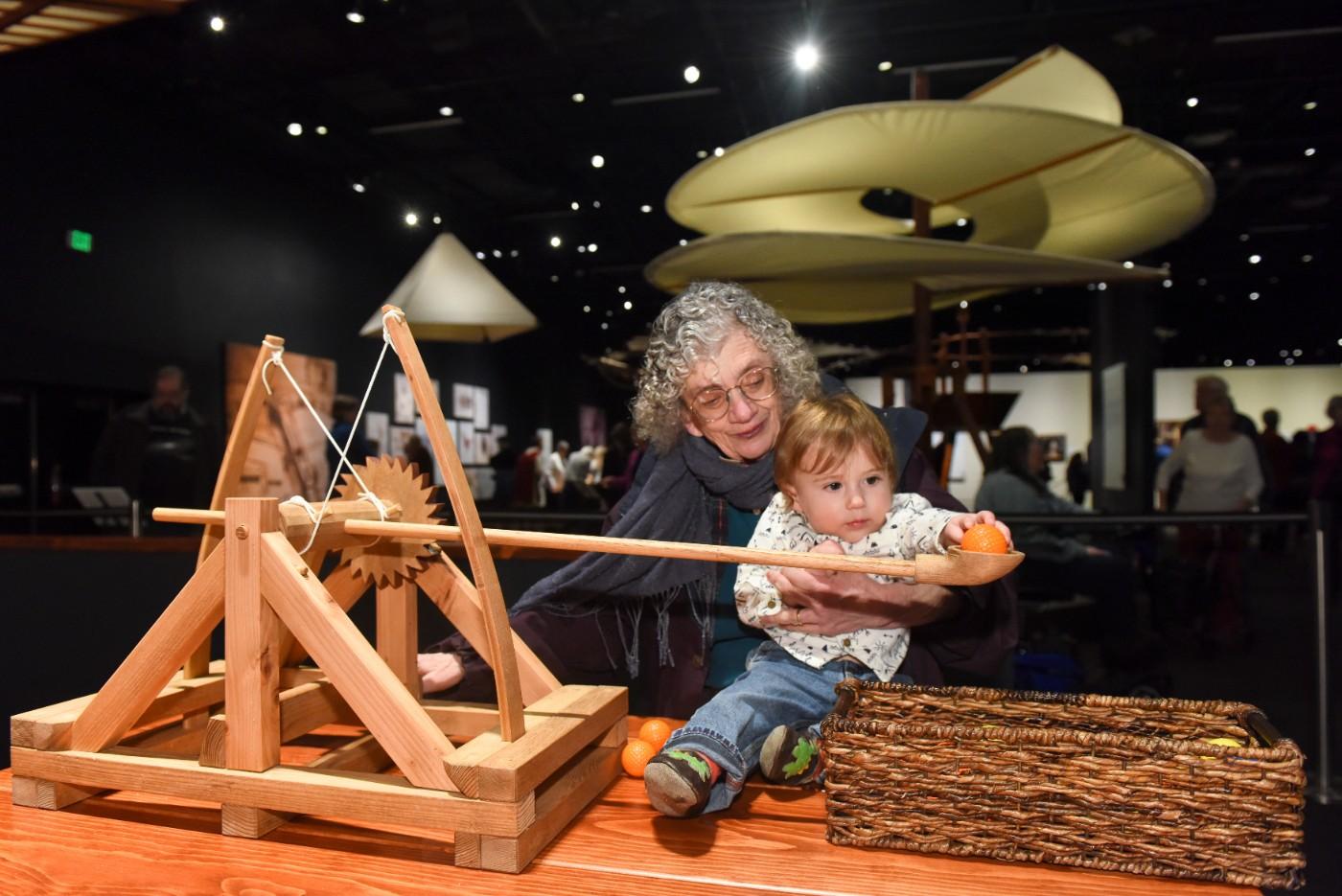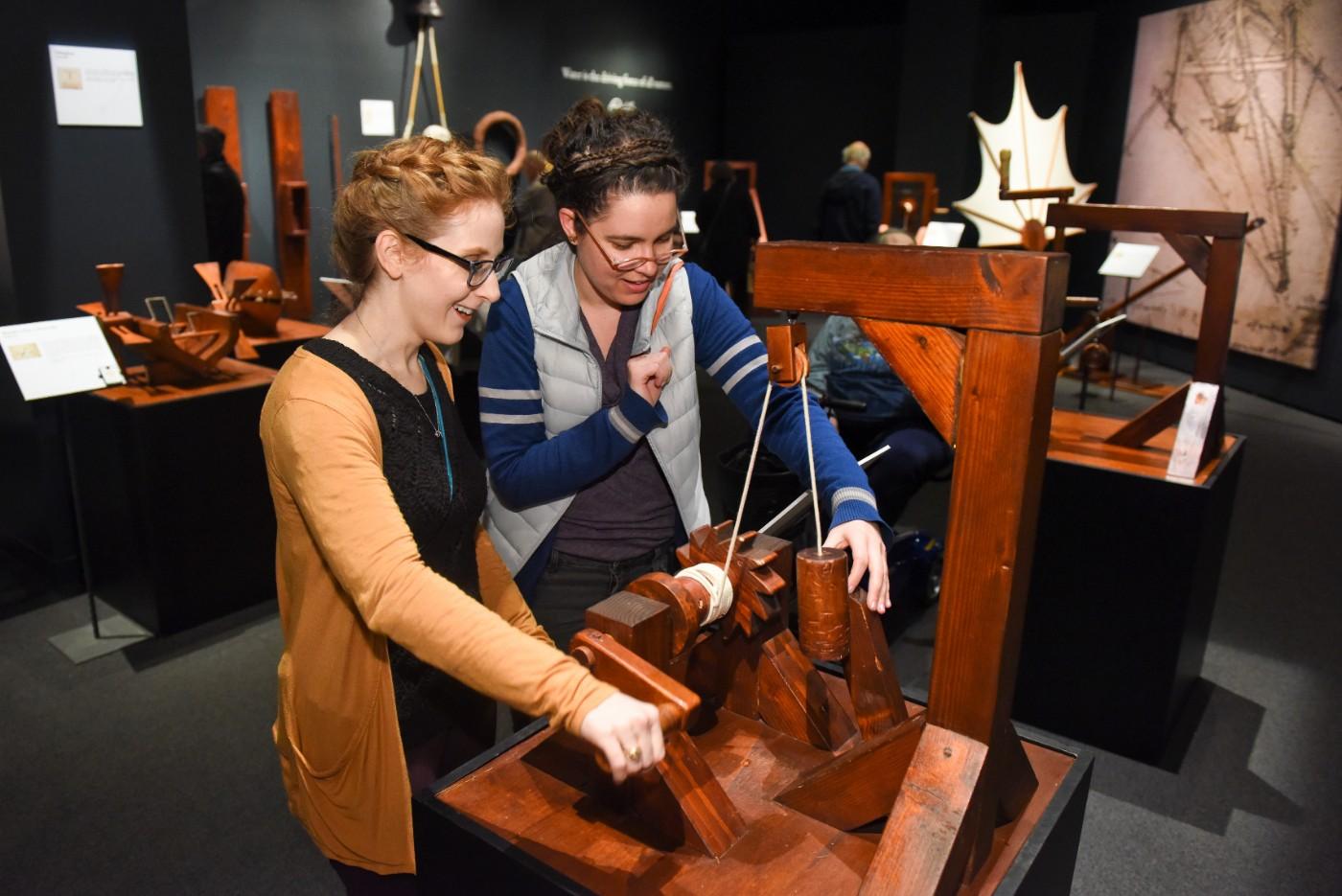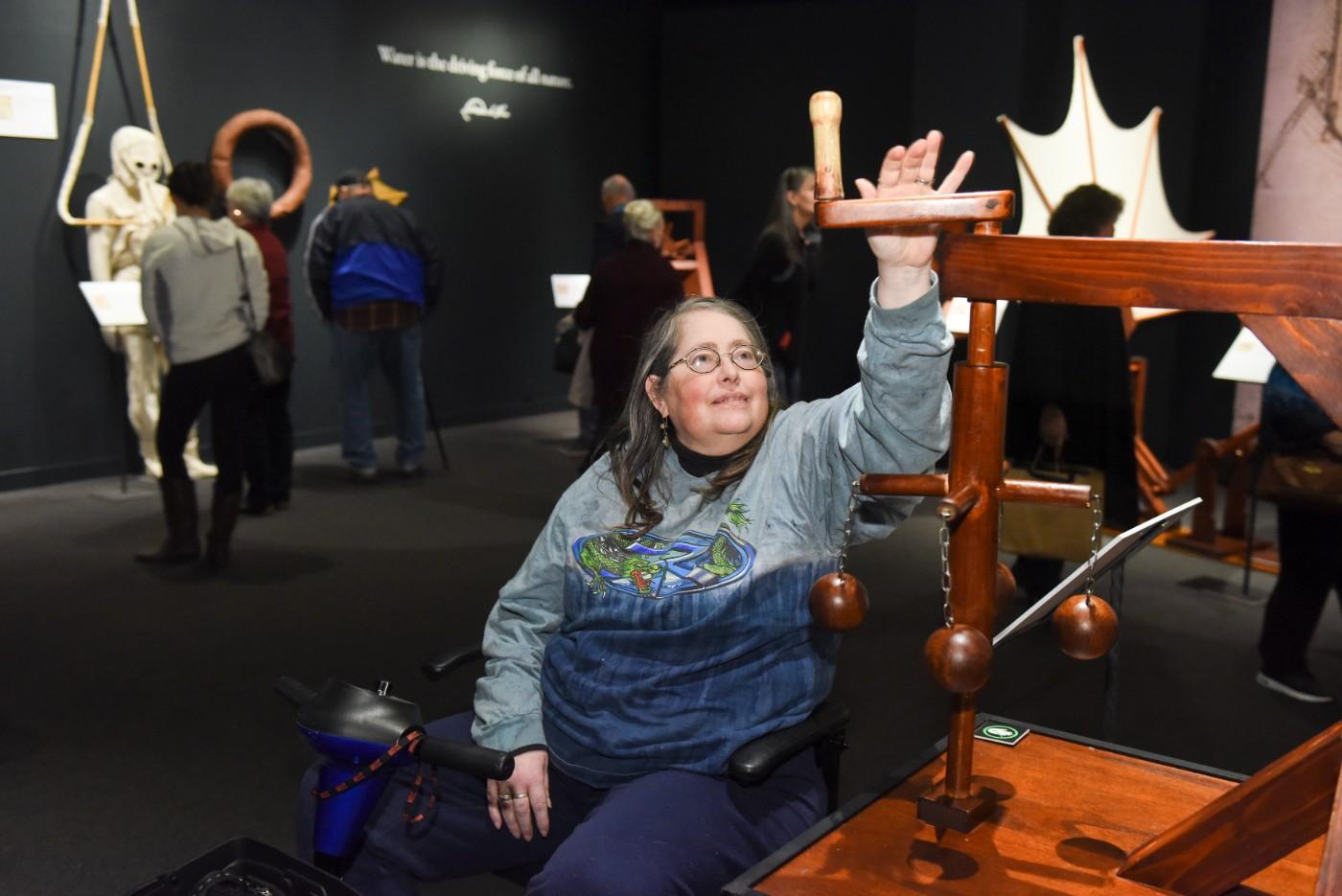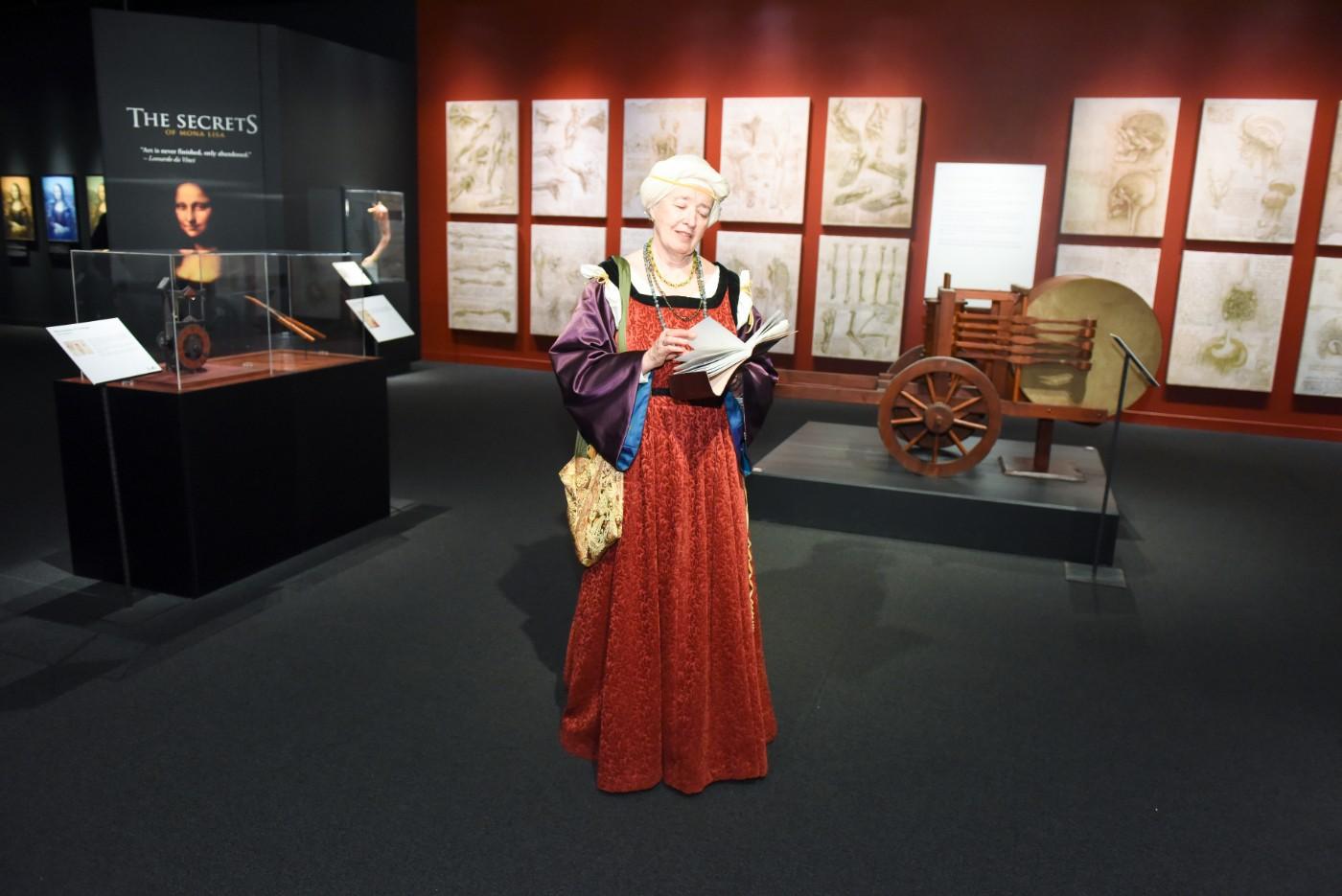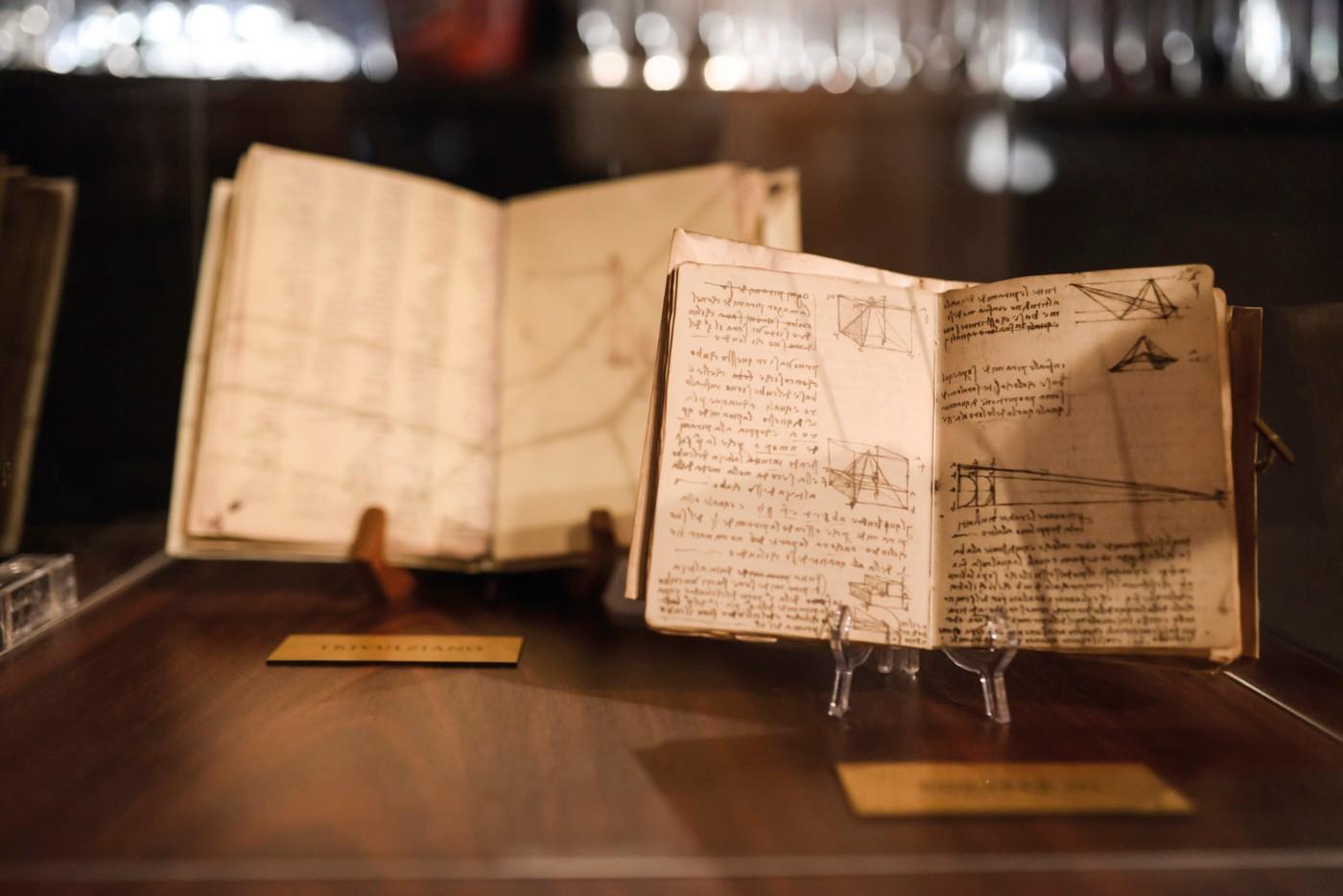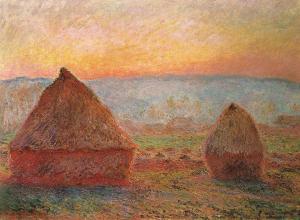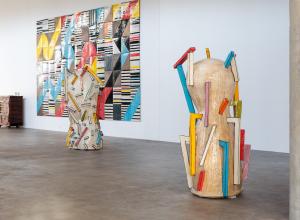Born illegitimately and thus denied a formal education, da Vinci lived his life as a painter, sculptor, architect, engineer, anatomist, and philosopher, and died on May 2, 1519. Da Vinci’s half-millennium legacy includes the enigmatic Mona Lisa. One of the most famous paintings in art history, Mona Lisa was among the first portraits to include a landscape background depicting depth perception. A high point in the Mile High City’s exhibit is “The Secrets of Mona Lisa”—an analysis of the painting conducted by the Louvre, which displays the never-finished oil-on-wood portrait in Paris.
In 2017, da Vinci’s Salvator Mundi—also known as the “Male Mona Lisa”—made history when the masterpiece brought $450,312,500 and became the most expensive painting ever sold at auction, more than doubling the previous record. The painting continues to be shrouded in mystery, as its new owner, a Saudi prince acting as an agent for the Louvre Abu Dhabi, has yet to put it on public display.
An educator at the Denver Museum of Nature and Science, Samantha Sands emphasized several of da Vinci’s pioneering contributions to art. “Leonardo understood perspective. He used sfumato, the blurring of edges that happens naturally with our eyes and makes his art look so realistic,” she said.

